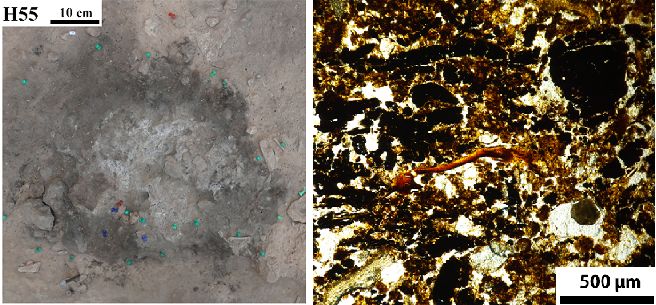
Ancient Neanderthal hearths unearth settlement patterns
A research team from Universidad de La Laguna, Spain have uncovered mobility and settlement patterns of Neanderthals by unearthing ancient fire remains.
The team conducted their research at the Middle Paleolithic site El Salt in Spain, which contains eleven overlapping and well-preserved open-air hearths. By studying the micromorphology of the layers of earth inside the hearth structures, the team was able to identify how long Neanderthals occupied a settlement. And lipid biomarkers and isotope analysis showed the team what foods were eaten and what fuels were used.
“Micromorphology combined with lipid biomarker analysis is a powerful approach to investigate anthropogenic combustion-related archaeological contexts from a microstratigraphic perspective which can contribute valuable information on the timing and intensity of Neanderthal occupations as well as the natural setting of the site,” study leader Lucia Leierer said. “These are key factors of group mobility and settlement patterns.”
Researchers found that hearths were built on multiple layers of topsoils over different periods of time and burned organic matter such as herbivore excrement and flowering plants. Furthermore, researchers conclude that Neanderthals only stayed at the settlement for a limited time, as evident in the flint, bone shards, and conifer wood charcoal that was brought to the site from another location.

Neanderthal combustion structure and microscope photograph of organic components of the combustion structure. Image Credit: Leierer et al, 2019
It is believed that evidence from the hearths show at least four successive short-term Neanderthal occupations at the site, each being separated by long periods of time — perhaps seasons.
These findings, published in PLOS One, could potentially lead to a better understanding of Neanderthal group mobility and settlement.
—
By Olivia Harvey, Earth.com Staff Writer













